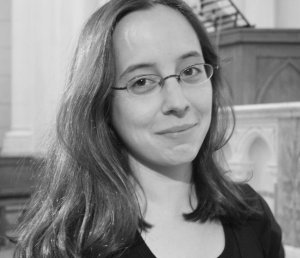Bach's Music for Gamba and Harpsichord
On Monday night, I was in an approximation of heaven on earth, hearing the first concert in the Baroque series at La Maison Française. The crowd was large enough that it filled every seat, not in the embassy's auditorium, but in the closed-off corner of the main hall. The reason undoubtedly was the announced program, all three of J. S. Bach's sonatas for viola da gamba and harpsichord (BWV 1027-1029), and the name of the gamba player, Jérôme Hantaï, who has been a popular performer at the French embassy. (His brothers, Pierre and Marc, are a respected harpsichordist and Baroque flutist, respectively.) Little did I know that I would be most impressed by Hantaï's partner for the evening, harpsichordist Maude Gratton, whose name I had not really heard before but who has begun a successful career in Europe.
Jordi Savall / Ton Koopman Jaap ter Linden / Richard Egarr Wieland Kuijken / Gustav Leonhardt Jonathan Manson / Trevor Pinnock |
While the first sonata is dominated by the viola da gamba, the harpsichord part comes often to the fore in the second sonata (D major). Reserved moods prevailed in the first three movements, caressing the opening Adagio, and allowing the sphinx-like Andante to unfold at its own pace. In the fourth movement the players opened the throttle as the sonata roared to its conclusion. I am not sure about the viola da gamba that Hantaï played, but it makes a gentle sound that was occasionally covered by the harpsichord in the first sonata, which I heard from the back of the room. For the rest of the concert, when I was at the front of the audience, the balance seemed much better.
 Gratton was playing a 1994 instrument made by Mark Adler, who has a workshop in Gaithersburg. It has a suave, noiseless sound that made for very enjoyable listening when the program, played without intermission, was extended at this point with two pieces for harpsichord. (These were not listed in the program, but Ms. Gratton confirmed the titles for me by writing them on my program afterward.) The substantial toccata in E minor from the 6th partita (BWV 830) is more or less in three sections, a central fugue bookended by quasi-improvisatory fantasia sections. This was followed by the B minor Prelude and Fugue on a Theme of Tommaso Albinoni, BWV 923 and 951. The prelude of this pairing is probably not by Bach, but its virtuosic whirls of arpeggiation showed the ultimate facility of Gratton's technique, the result of study with Olivier Baumont and Olivier Latry, among others. The fugue, whose subject combines an ascending minor opening and a descending chromatic tail, was marvelously Byzantine in complexity.
Gratton was playing a 1994 instrument made by Mark Adler, who has a workshop in Gaithersburg. It has a suave, noiseless sound that made for very enjoyable listening when the program, played without intermission, was extended at this point with two pieces for harpsichord. (These were not listed in the program, but Ms. Gratton confirmed the titles for me by writing them on my program afterward.) The substantial toccata in E minor from the 6th partita (BWV 830) is more or less in three sections, a central fugue bookended by quasi-improvisatory fantasia sections. This was followed by the B minor Prelude and Fugue on a Theme of Tommaso Albinoni, BWV 923 and 951. The prelude of this pairing is probably not by Bach, but its virtuosic whirls of arpeggiation showed the ultimate facility of Gratton's technique, the result of study with Olivier Baumont and Olivier Latry, among others. The fugue, whose subject combines an ascending minor opening and a descending chromatic tail, was marvelously Byzantine in complexity.There remained only the third gamba sonata (G minor), in three movements instead of four and of a greater degree of complexity. Its opening Vivace is constructed like a concerto movement, which the players took at an appropriately brisk tempo. The gorgeous and stately second movement ticked like a clock to its inevitable end. This fine concert was capped off, as Hantaï put it, by "some French music," two encores by Marin Marais, a minor-key sarabande and the Fantaisie Luthée from the D minor suite of the composer's second book (1701). The only other matter to be concluded was a choice for each member of the audience: red or white.





















































No comments:
Post a Comment